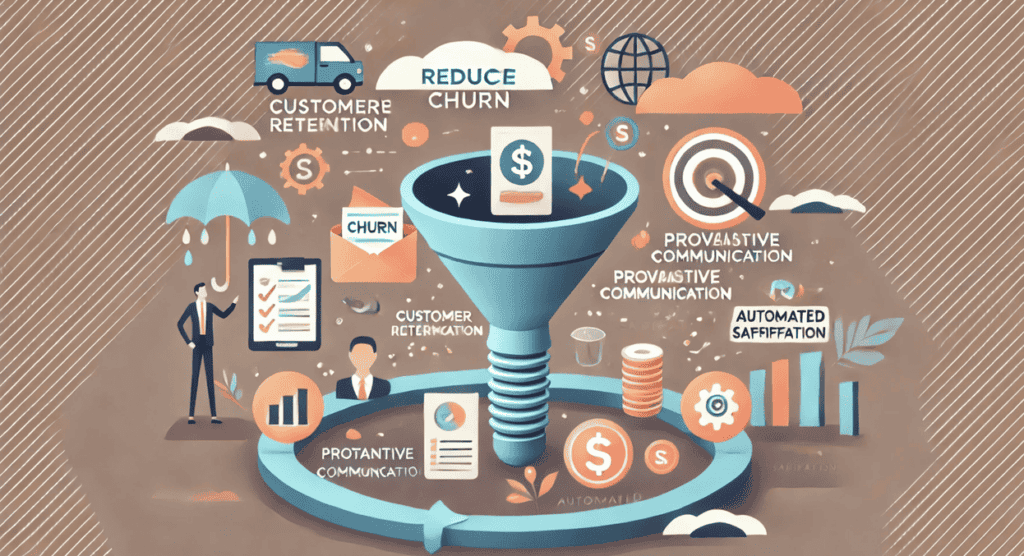How to reduce churn in your subscription business – and retain your customers
Churn is expensive, but it can be significantly reduced with the right strategy. By combining proactive communication, personalized customer service, flexible subscription options, and automated payment solutions like Alunta, you can retain more customers and build a healthy and stable subscription business.

If you run a subscription business, you’ve undoubtedly encountered the term churn—customer attrition. Churn can be a major headache because acquiring new customers costs more in terms of time and money compared to retaining existing ones. (You can read a previous article where I looked into the cost difference between acquiring new customers and renewing existing ones.) In this article, you’ll learn what churn actually is, why it happens, and how you can keep your churn rate down.
What is churn, and why does it happen?
Churn refers to the number of customers who cancel or stop using your product or service within a given period. There are two types of churn:
Voluntary churn: The customer actively chooses to cancel. Involuntary churn: The customer doesn’t actively cancel but loses access due to failed payments.
Involuntary churn is difficult to tackle. If customers stop paying their bills without notifying you, your options are limited. You could pursue collection and possibly legal action, but it’s rarely worth the effort if your service only costs a couple of bucks.
However.
Voluntary churn is easier to manage because you maintain contact with the customer. When customers reach out to cancel, it’s your opportunity to retain them. Common reasons for voluntary churn include;
- price increases
- dissatisfaction with the product or service
- perceived lack of value
- or tempting competitor offers.
Statistics indicate it can cost up to 5-25 times more to acquire new customers than to retain existing ones.
That’s why I believe understanding and minimizing churn is crucial.
How to identify customers at risk
To prevent churn, you first need to identify customers likely to leave your business. Signs include:
- Declining product usage or engagement. Here, I’d recommend collecting data on customer usage of your service. If you’re in software, a system like Mixpanel can be extremely valuable.
- Frequent complaints or customer service inquiries. Repeated negative reviews or frustrated customers contacting support can clearly signal that customers might leave soon. If you’re a CEO or responsible for customer support in any way, I’d strongly recommend allocating time regularly to speak directly with customers. This is the only effective way to truly understand customer frustrations.
- Repeated payment failures. Issues that are fixable but frustrating to manage regularly.
- Data analysis and customer insights are crucial tools to help you detect these warning signs early, allowing you to respond proactively.
Once the customers are identified, here’s the strategies you can use to turn it around. You can even take this a step further and automate a lot of these strategies.
Five specific strategies to reduce churn
- Proactive communication: Maintain regular contact with your customers. Personal follow-ups, tips, or useful information foster a sense of value and engagement, making customers feel appreciated—even after they’ve purchased your product or service. Automated email sequences can ensure customers regularly hear from you and know they can reach out anytime.
- Personalization and value: Customize the customer experience. When customers feel your product meets their specific needs, they’re more likely to stay. Personalized recommendations, unique discounts, or tailored solutions can help.
- Flexible subscription models: Make it easy to pause, downgrade, or adjust subscriptions. This might seem counterintuitive, but when customers feel in control, they tend to stay longer.
- Reward loyalty: Implement loyalty programs offering special benefits, discounts, or exclusive content to long-term customers. This shows appreciation for their loyalty and gives customers a reason to stay. (Use this cautiously, as you don’t want to negatively impact your Monthly Recurring Revenue (MRR)).
- Automation and payments Automated systems like Alunta significantly reduce involuntary churn by automatically handling payment failures, reminders, and invoicing. This ensures fewer customers are lost due to technical issues.
How Alunta can help reduce churn Alunta offers automated, efficient handling of subscription payments. This includes:
- Error-free automated invoicing.
- Rapid management of failed payments with automatic customer communication.
- Built-in data insights to quickly identify customers at risk of churn.
With Alunta, you can stay ahead and proactively engage customers before they decide to leave.